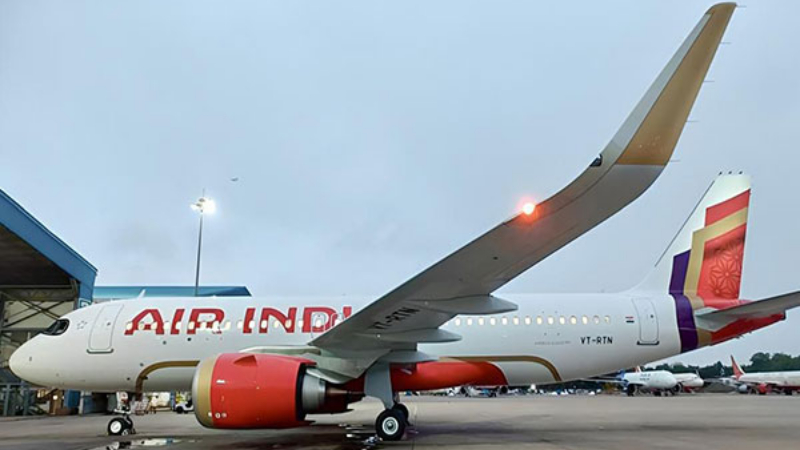According to a report by The Mint, Indian airlines face a potential capacity shortage during the peak December quarter travel season, as aircraft induction plans of major carriers are progressing at a sluggish pace, according to data from aircraft tracking site Flightradar24 .
Since the suspension of low-cost carrier Go First, domestic airlines’ fleet size has risen by just 0.9% to around 680. Only three major scheduled carriers, including market leader IndiGo, Tata Group’s Air India and startup carrier Akasa Air have added airplanes to their fleet since May.
IndiGo’s fleet witnessed 3% increase to 312 aircraft, while Air India’s net fleet size rose by 5% to 124 aircraft. However, out of Indigo’s 312 aircraft, 47 are currently grounded due to maintenance work, and shortage of spare engines and parts, Flightradar24 data showed.
Indian airlines are trying to minimize the impact of supply chain disruptions plaguing the original equipment manufacturers of aircraft. IndiGo, for example, has reinducted older aircraft on lease in order to tide over the delays in new aircraft delivery, said Pushan Sharma, director, research, Crisil Market Intelligence and Analytics.
In 2022, Air India had said that it would induct 36 aircraft on lease, including 21 Airbus A320neos, 4 Airbus A321neos and 5 Boeing B777-200LRs, and 6 Boeing 777s beginning 2023, to expand its operations. However, so far, the airline has inducted four Boeing 777-LRs and two A321neo planes, following a delay in deliveries.
According to the scheduled timelines, it was expecting the five wide-body B777-200LRs between December 2022 and March 2023, the A321 aircraft in the first quarter of 2023, and the 21 A320 in the second half of the year. The six additional Boeing 777s were expected in the first half to meet its near-term capacity requirements.
“Supply chain issues are still going on, and are becoming a major barrier for airlines as the plans are not in sync with the ground realities. At present, demand has tapered due to a fall in leisure travel, but as the demand picks up from October, it will become a significant concern,” an airline executive said, seeking anonymity.
For budget carrier SpiceJet, the fleet has shrunk to around 55 aircraft, out of which 23 are grounded.
While supply chain issues continue to impact all airlines, SpiceJet is also facing legal battle with its lessors and the company is planning a fund raising. Last month, the airline said it will induct 10 aircraft by September to meet the anticipated demand for air travel.
The fleet of India’s youngest airline Akasa Air is at 19 aircraft since its launch last August. It is set to add a 200-seater B737. The airline plans to add 12-14 aircraft in 2023-24, according to its official estimate.
Tata-owned full-service airline Vistara has not increased its fleet size, and currently has 61 aircraft, out of which 5-7 are not grounded. However, the airline seeks to add nine planes by FY24-end.
“Domestic airlines are likely to witness a pick up in capacity additions by the end of the year, as the two OEMs typically deliver a major part of the orders in the latter half of a year, coupled with improved production as supply chain challenges ease and orders earmarked for struggling Indian carriers are delivered to the stronger carriers,” Sharma added.






